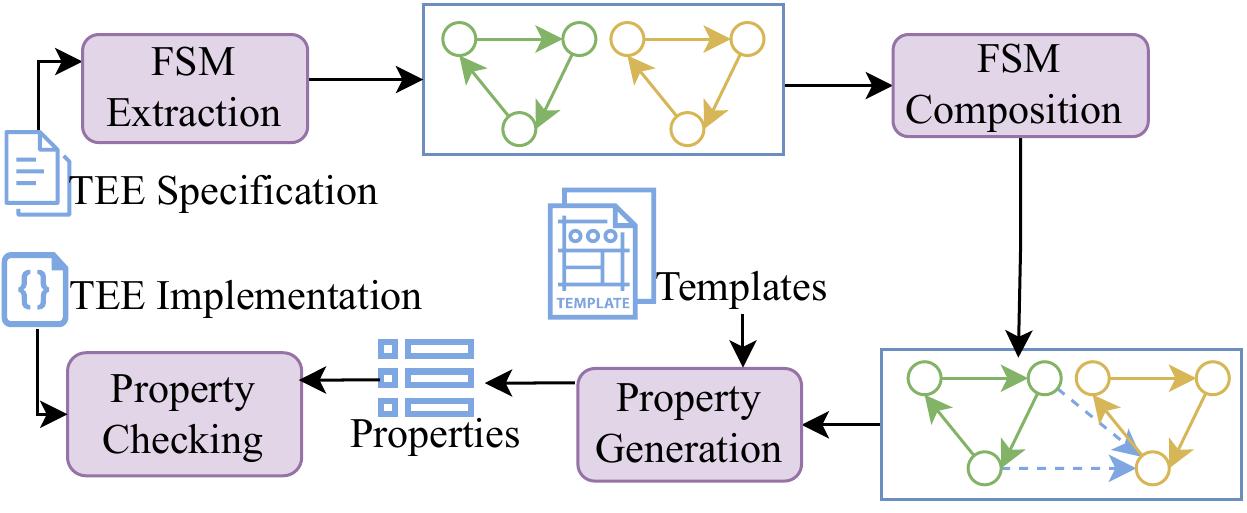TEE-Properties offers a tool for generation of verification properties for Trusted Execution Environments (TEEs). Our method facilitates the verification of TEE implementations by generating specific properties based on TEE specifications. This tool was developed at the Embedded Systems Lab, Department of Computer Science, University of Florida as part of a project sponsored by SRC.
Our approach provides a structured method to generate verification properties for TEE implementations. The process begins with extracting local Finite State Machines (FSMs) that describe security protocols based on TEE specifications. Next, a global FSM is composed by integrating the external relations identified among the local FSMs. Using this global FSM and predefined property templates, the tool generates verification properties. Finally, these properties are used to check the implementation of TEEs. This tool focuses on the third step of our framework, generating properties for verification.
| Property | Template | Explanation |
|---|---|---|
| Safety | G (q1 -> X (! (q2 U i1))) |
Ensures that from state q1, input i1 does not lead to state q2. |
| Liveness | G ((q1 & i1) -> F q2) |
Guarantees that in state q1 with input i1, state q2 will eventually be reached. |
| Concurrency | G ((q1 & q2 & ... & qn) -> o1) |
Verifies that concurrent execution of states q1, q2, ..., qn results in output o1. |
To use the tool, execute the following commands:
./property_generation <fsm_file>
# Example
./property_generation fsm.json- Python: The tool is developed and tested with Python. Ensure Python is installed and configured on your system.
- Operating System: Designed to run on Ubuntu/Linux.
The tool requires an FSM (Finite State Machine) file as input, structured similarly to the global FSM format illustrated in fsm.json. Ensure your FSM file adheres to this format for accurate property generation.
The tool generates a set of verification properties focusing on Safety, Liveness, and Concurrency aspects of TEE implementations. These properties are compiled and saved in a file named property.txt.
- File:
property.txt - Contents: Verification properties generated by the tool. Each property addresses a specific aspect (Safety, Liveness, Concurrency) relevant to the TEE implementation being analyzed.

